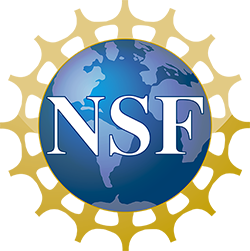Equatorial Rossby Wave Reflection and Transmission
(Collaboration with J. Pedlosky)
The interaction of equatorial Rossby waves with a western boundary perforated with one or more narrow gaps is investigated using a shallow water numerical model and supporting theory. It is found that very little of the incident energy flux is reflected into eastward propagating equatorial Kelvin waves provided that at least one gap is located within approximately a deformation radius of the equator. Due to the circulation theorem around an island, the existence of a second gap off the equator reduces the reflection of short Rossby waves and enhances the transmission of the incident energy into the western basin. The westward energy transmitted past the easternmost island is further reduced upon encountering islands to the west, even if these islands are located entirely within the "shadow" of the easternmost island. A series of calculations was carried out in which westward propagating waves were generated by a patch of zonal wind stress in the middle of the Pacific Ocean. The amount of energy reflected into eastward propagating Kelvin waves was strongly dependent on the duration and meridional length scale of the forcing. For forcing events that last 2 years and have a meridional length scale of 700 km, the reflection is 37% of the incident energy flux, very close to that predicted by the theories of Clarke (1991, JGR-Oceans) and du Penhoat and Cane (1991, JGR-Oceans). However, wind events of shorter duration or smaller meridional length scale produce considerably less reflection. For parameters typical of ENSO (1 year duration, 400 km meridional scale) we find 23% reflection. This suggests that winds must be of sufficient duration and meridional length scale to sustain ENSO events.
An animation of a Rossby wave impinging on a western boundary with a gap
Click here for Rossby wave movie
An animation of a Kelvin wave impinging on an eastern boundary with a gap
Click here for Kelvin wave movie
Funding Agencies
This work has been generously supported through grants from the National Science Foundation and the Office of Naval Research.


Publications on these subjects:
Pedlosky, J. and M. A. Spall, 2005. Reflection and transmission of equatorial Rossby waves. Journal of Physical Oceanography , 35, 363-373